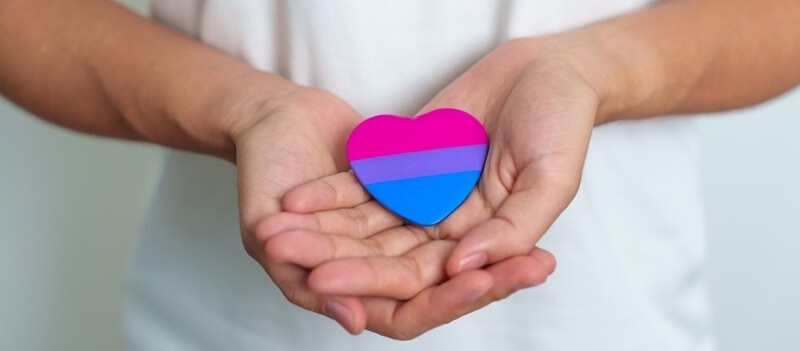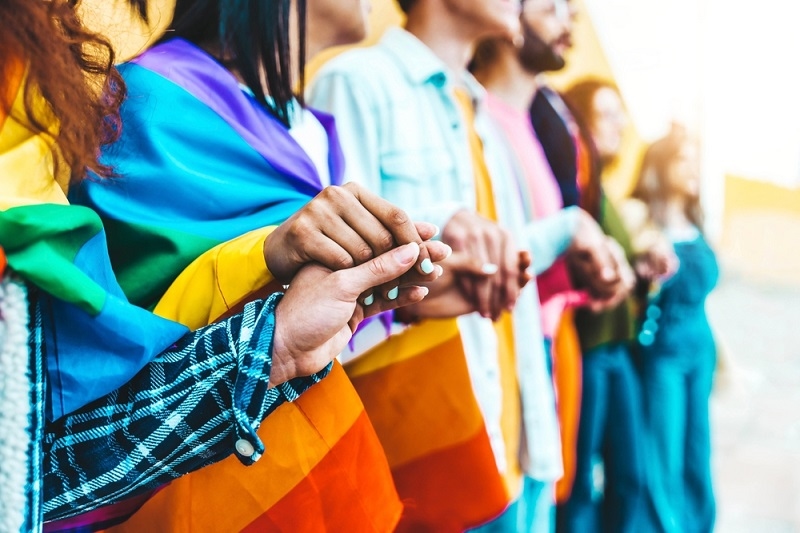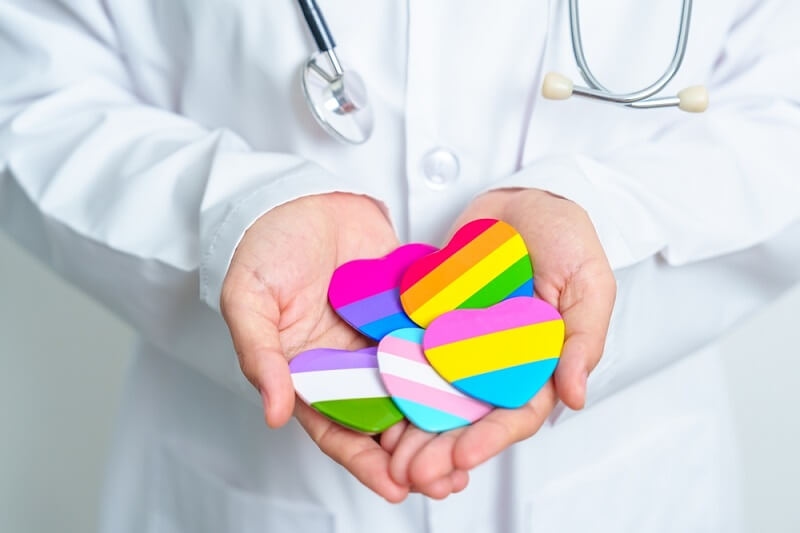Surviving a Lesbian Breakup: Steps to Heal and Thrive

Experiencing a breakup is one of the most challenging emotional journeys one can endure, and this is especially true when it happens in a close-knit community like the lesbian community. My own story began when my girlfriend of eight months decided to end our relationship just a week before Christmas.
The news hit me like a ton of bricks, leaving me feeling devastated, numb, and profoundly disappointed. Questions and doubts swirled through my mind: What about our future plans? Why did this happen now? Am I destined to be alone? This sudden shift from togetherness to separation felt more like a breakdown than a breakup.
Breakup to Breakthrough

After the initial shock subsided, I realized that I had a choice: I could either let this breakup define me and drag me down, or I could use it as a catalyst for personal growth. This concept, which I call "Breakup to Breakthrough," involves embracing the pain and transforming it into an opportunity for self-improvement and emotional resilience. Its about acknowledging the hurt, understanding its impact, and then using that understanding to rebuild oneself stronger and more self-aware.
Feel Your Pain
Understanding the Grieving Process
Understanding and navigating the grieving process is essential to healing. Experts often describe this process in five stages: denial, anger, bargaining, depression, and acceptance. Each stage represents a different set of emotions and thoughts that need to be acknowledged and processed. Grieving a breakup is akin to mourning a loss, and its important to allow oneself to fully experience these emotions.
Embracing and Processing Emotions
Rather than suppressing the pain, embracing it can lead to deeper healing. Its natural to feel a rollercoaster of emotions in the aftermath of a breakup. Allow yourself to cry, to feel anger, and to sit with sadness. These emotions are a necessary part of the healing journey. Techniques such as mindfulness and focusing on the physical sensations of pain can help in processing these feelings more effectively.
Self-Care and Self-Love
Building a Strong Foundation of Self-Love
Self-love is the cornerstone of emotional healing after a breakup. It involves treating yourself with the same kindness and respect you would offer to a dear friend. Begin by acknowledging your worth and embracing your imperfections. Building self-love requires patience and practice but is essential for recovering from the emotional toll of a breakup.
Engaging in Activities that Nurture Your Well-Being
Prioritize activities that promote your physical, emotional, and mental well-being. This could include regular exercise, healthy eating, and adequate sleep. Additionally, indulge in activities that bring you joy and relaxation, such as spa days, creative projects, or travel. Surround yourself with supportive friends and family who uplift you and provide a sense of community. By nurturing your well-being, you rebuild your self-esteem and resilience.
Forgive Yourself and Your Ex

Importance of Forgiveness for Healing
Forgiveness is a powerful tool in the healing process. Holding onto resentment and anger can prolong the pain and hinder personal growth. Forgiving your ex, and more importantly, forgiving yourself, allows for emotional release and paves the way for healing. Its about letting go of the negative emotions tied to the breakup and finding peace within.
Using the Hooponopono Mantra for Emotional Release
A particularly effective method for achieving forgiveness is the Hooponopono mantra, a traditional Hawaiian practice of reconciliation and forgiveness. The mantra consists of four simple phrases: "Im sorry," "Please forgive me," "Thank you," and "I love you." Repeating these phrases can help facilitate emotional release and healing. It shifts the focus from blame to self-compassion, fostering a sense of peace and closure.
Take a Break From Dating
Importance of Giving Yourself Time
One of the first steps in this transformative process is taking a break from dating. It's crucial to give yourself the time to heal and to understand the lessons from the previous relationship.
Rushing back into the dating scene without proper emotional recovery can often lead to repeating the same mistakes or finding oneself in a rebound relationship that may do more harm than good. Taking time for self-healing is also vital for LGBTQ+ mental health, ensuring emotional well-being and resilience before pursuing new relationships.
Recognizing When You Are Ready to Date Again
Knowing when you are ready to date again is a deeply personal decision. For some, it might take a few months, while for others, it might be a year or more. The key is to listen to your inner voice and to start dating only when you genuinely feel ready. Its about feeling whole on your own and being in a place where you can offer your best self to a potential new partner.
Find the Positive in the Negative
Turning Challenges into Opportunities for Growth
While breakups are inherently painful, they also present unique opportunities for personal growth. Each challenge faced during this period can be viewed as a lesson that contributes to your resilience and emotional intelligence. By reflecting on what went wrong in the relationship, you can gain valuable insights into your own behavior and preferences. This self-awareness is crucial for personal development and for building healthier relationships in the future.
Exercises to Identify Positive Aspects of the Breakup
One effective exercise is to list the positive outcomes of the breakup. This could include gaining more time for self-care, pursuing neglected hobbies, or reconnecting with friends. Another technique is to keep a gratitude journal where you write down things you are thankful for every day.
This practice shifts your focus from loss to appreciation, fostering a more positive mindset. Over time, recognizing these positives helps in reframing the breakup as a stepping stone rather than a setback. Moreover, understanding and addressing LGBTQ suicide prevention is crucial, as it highlights the importance of mental health support during such challenging times.
Look Ahead
Preparing to Enter the Dating Scene Again
When you feel emotionally ready, consider re-entering the dating scene. Take this step with caution and mindfulness, ensuring that you are not seeking a relationship to fill a void but are genuinely ready to connect with someone new. Reflect on what you have learned from your past relationship and set clear boundaries and expectations for future ones. This preparation helps in attracting a partner who aligns with your values and enhances your life.
Ensuring Emotional Readiness to Attract Healthy Relationships
Before diving back into dating, assess your emotional readiness. Are you comfortable being alone? Have you processed your past relationship fully? Being emotionally prepared means you have healed sufficiently to offer your best self to a new partner. It ensures that you are entering relationships from a place of strength and self-assurance, which is vital for building a healthy and fulfilling connection.
Engage in Distractions
Activities to Keep Your Mind Off the Breakup
One of the most effective ways to cope with a breakup is to keep yourself busy with activities that distract you from the emotional pain. Engaging in hobbies, sports, or creative pursuits can be therapeutic. Whether it's joining a new fitness class, picking up a musical instrument, or diving into a good book, these activities help redirect your focus and energy. They not only provide a mental break from the constant thoughts of your ex but also offer a sense of accomplishment and enjoyment.
Establishing New Routines and Habits
Creating new routines can significantly aid in the healing process. Start by altering your daily schedule in small ways to break old patterns that remind you of your past relationship. Establish new habits, such as morning meditation, evening walks, or regular journaling. These new routines can provide structure and a sense of normalcy, helping you gradually rebuild your life without your former partner. Additionally, they promote personal growth and can lead to discovering new passions and interests.
You may also like: Navigating Health for Lesbian and Bisexual Women
Conclusion
Embracing the belief that there is a better path ahead is crucial for moving forward. Trust that every experience, including the painful ones, shapes you into a stronger and wiser individual. This optimistic outlook can motivate you to embrace new opportunities and experiences with an open heart.
Small changes can lead to significant transformations. Whether it's changing your hairstyle, redecorating your living space, or taking up a new hobby, these small steps symbolize new beginnings. Embrace these changes as a way to signify your growth and readiness for the next chapter of your life. By focusing on these positive shifts, you pave the way for a brighter, more fulfilling future.
This content was created by AI























